Gatekeeping in Fighting Games: Community, Tech and Barriers
Updated On: October 24, 2025 by Aaron Connolly
Understanding Gatekeeping in Fighting Games
Gatekeeping in fighting games puts up walls that can drive new players away. Sometimes, veterans call beginners “button mashers” or even keep crucial gameplay knowledge to themselves.
Definition and Origins
Gatekeeping means deciding who gets access to resources, power, or opportunities in a community. In fighting games, you’ll see experienced players try to control who joins in or who gets to succeed.
The fighting game community (FGC) picked up this habit over decades. Back in the arcade days, tight-knit groups formed, and you had to prove yourself if you wanted respect.
Common gatekeeping behaviours:
- Not teaching new players basic combos
- Mocking people for picking “easy” characters
- Looking down on simplified control schemes
- Making local tournaments feel unwelcoming
This stuff usually comes from the community’s competitive streak. Many long-time players think newcomers should “pay their dues” just like they did. Some even worry that making games more accessible will ruin what makes them special.
Online play has made gatekeeping more obvious. Social media turns up the volume on negative attitudes toward new players. Comment sections fill up with complaints about “scrubs” and “casuals” ruining things.
Common Forms in the FGC
Character shaming pops up everywhere. Players get mocked for picking characters others call “cheap” or “braindead.” Suddenly, only certain picks are “respectable.”
People often target:
- Grapplers (they get called “unskilled”)
- Characters with easy combos
- Top-tier fighters that dominate tournaments
Execution elitism is another big one. Some folks insist that tough inputs and frame-perfect timing separate the “real” players from everyone else. They’ll call modern control schemes training wheels.
Knowledge hoarding also crops up. Some experienced players refuse to share strategies or tech. They treat their knowledge like it’s a secret club password, which just slows down everyone else’s progress.
Tournament gatekeeping shows up at locals. Some established players make the place feel hostile. New faces get mocked, kept out of casual matches, or just brushed off.
Online toxicity is everywhere too. Rage quitting, hate messages, and harassment all get justified by “skill gaps.” Newcomers trying to learn get the worst of it.
Impact on Community Growth
Gatekeeping hurts fighting game communities by pushing away new folks. Research shows that 77% of women face discrimination in gaming, and gatekeeping is a big reason why.
A lot of new players quit after just a few months. They run into people who won’t help, get mocked for mistakes, or get left out of practice sessions. The result? Communities shrink over time.
This hits everyone in the wallet. Smaller communities mean:
- Fewer people enter tournaments, so prize pools drop
- Less developer support for updates and content
- Fewer sponsorships
- Lower viewership at big events
But when communities welcome new players, the opposite happens. Games with supportive vibes keep growing. Street Fighter 6 thrived partly because Capcom and community leaders pushed for inclusivity.
Good stuff looks like:
- Mentorship at big tournaments
- Online lobbies set up for beginners
- Celebrating all kinds of characters
- Creating educational content
When we cut out gatekeeping, fighting game scenes get more diverse and way more sustainable. New players bring fresh ideas, more money, and real long-term growth for everyone.
The Role of Community in Gatekeeping
Fighting game communities decide if a space feels welcoming or hostile. Both local scenes and online groups set their own standards for who fits in.
Local FGCs and Online Spaces
Local fighting game groups often form around arcades or tournament spots. These crowds can get exclusive fast, especially when veterans ignore newcomers or set up unwritten rules about how to act.
Heads up: Some locals expect new players to lose quietly for months before getting any respect.
Online scenes have their own problems. Forums and Discords can get toxic, especially when veterans mock basic questions. Anonymity just makes the gatekeeping harsher.
Still, plenty of communities push back against this. Friendly locals offer beginner nights and mentorship. Online groups sometimes make special channels where new players can ask questions without getting roasted.
Pro tip: Look for communities with pinned beginner resources and mods who actually step in against gatekeeping.
Group Dynamics and Inclusion
Fighting game communities split into groups by skill, favorite games, or play style. These splits can build walls without anyone meaning to.
Veterans sometimes gatekeep by accident. They use jargon that confuses new folks or assume everyone knows the basics. Newcomers end up feeling left out, even if no one meant harm.
The most inclusive communities spot these issues and try to fix them. They ask veterans to explain things clearly and cheer on improvement, not just wins.
What works:
- Tournaments with beginner brackets
- Mentorships pairing newbies with veterans
- Clear rules against harassment and exclusion
These groups grow faster and keep more players because everyone feels like they have a shot.
Motivations Behind Gatekeeping
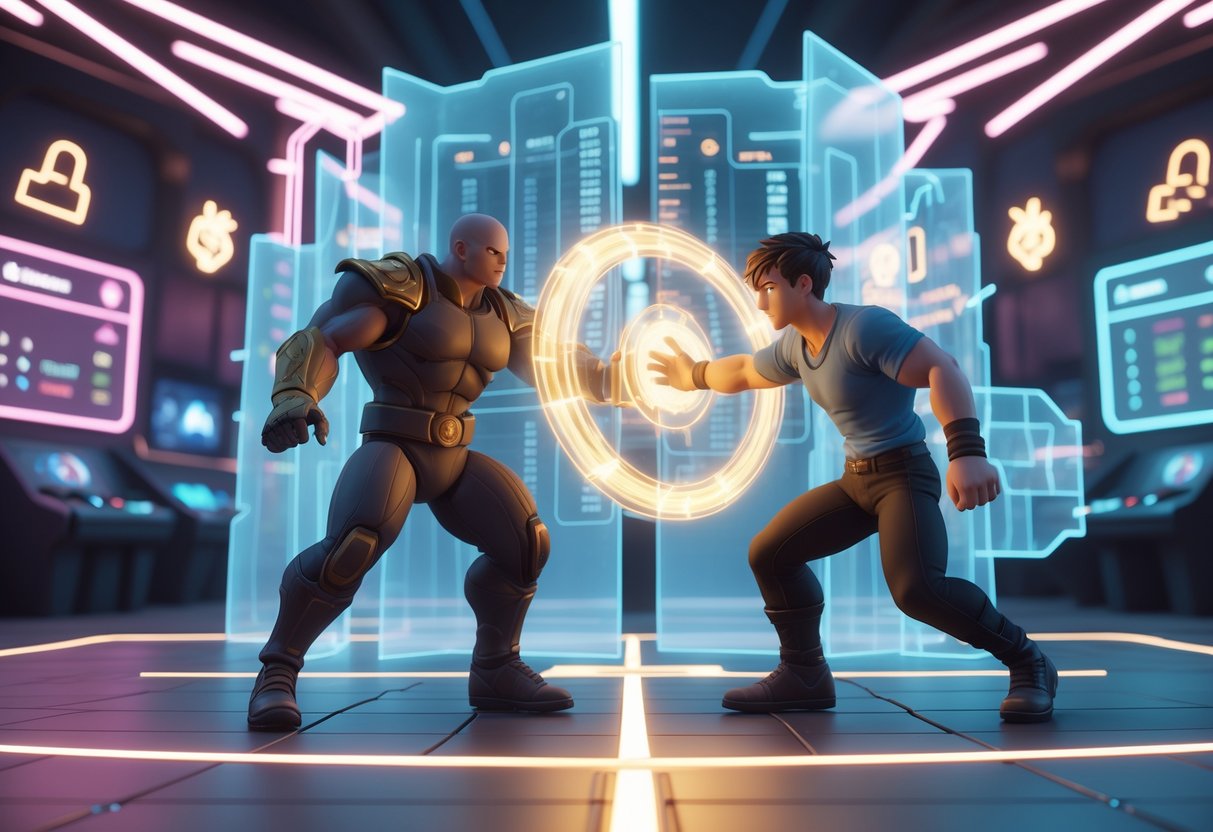
Gatekeeping in fighting games usually comes from three places: protecting the skill ladder, keeping a certain community identity, and controlling who learns the good stuff. Honestly, these motivations clash with making the genre more open.
Preservation of Skill and Status
A lot of veterans gatekeep to protect their spot in the pecking order. Fighting games reward years of grinding out combos, learning frame data, and memorizing matchups. When new players jump in without “earning it,” some veterans feel like their work doesn’t matter.
Typical gatekeeping moves:
- Calling casuals “button mashers”
- Not teaching basic stuff
- Making fun of “easy” character choices
- Setting up weird rules about how to learn
This mindset treats fighting game skill like it’s a limited resource. Veterans worry that making things easier will somehow erase their own expertise.
But that’s not how it works. Skill doesn’t shrink when more people join in. In fact, bigger communities mean tougher competition and more chances to get better.
Identity and Belonging
Fighting game communities often build their identity around shared struggles. People bond over learning tough inputs, hitting up tournaments, and inside jokes. Gatekeeping turns into a way to keep that special feeling exclusive.
Identity markers:
- Knowing arcade etiquette
- Using FGC slang
- Respecting legendary players and moments
- Preferring technical gameplay over flashy looks
If someone doesn’t get these references, some members start treating them like outsiders. They worry new players might change the vibe or mess with traditions.
Ironically, this just pushes away the folks who could make the community even stronger.
Exclusivity Versus Accessibility
The fight between keeping fighting games “pure” and making them open to more people is at the heart of a lot of gatekeeping. Some players want things to stay hard and niche. They see accessibility features or easier controls as watering things down.
This shows up as pushback against:
- Modern control schemes
- Tutorial and training modes
- Rollback netcode for online play
- Casual-friendly modes
Gatekeepers often call accessibility “dumbing down” instead of seeing it as opening doors. They miss the fact that these changes can help serious players train more efficiently, too.
The funny thing? Exclusive communities end up getting stale. Without new blood and fresh perspectives, even the best scenes can lose their edge and fall out of relevance.
Skill Barriers and Execution Requirements
Fighting games ask you for tight inputs and sharp timing—sometimes it takes months just to get the basics down. Complex motion commands and frame-perfect combos scare off a lot of new players. Veterans sometimes use this stuff to gatekeep, mocking people who use simpler controls or struggle with basic moves.
Technical Proficiency Expectations
Motion inputs are the backbone of classic fighting games. Pulling off a quarter-circle forward for a fireball can take weeks to nail. Advanced moves? They might ask for charge inputs, 360s, or hitting multiple buttons together.
Frame-perfect timing makes things even tougher. In Street Fighter, you have to link moves within just a few frames—literally fractions of a second. One-frame links in Street Fighter 4 were infamous for splitting casuals from competitors.
Many games expect you to memorize tons of moves for each character. You might need to know:
- 8-12 special moves
- 3-5 super attacks
- Several combo routes
- Unique motions
That’s a massive wall for new players. Veterans pull off complicated stuff, while beginners can’t even use their character’s main tools.
Modern games like Street Fighter 6 now offer simplified controls. You can do special moves with a single button, though usually at some kind of tradeoff.
Execution as a Gatekeeping Tool
The fighting game community often uses execution difficulty as a way to shut out newcomers. Veterans say “execution is a skill,” and claim that making things easier ruins the genre.
This leads to:
- Mocking simple controls as “scrubby”
- Dismissing wins from easier inputs
- Elitism over “optimal” play that needs frame-perfect timing
Some players honestly believe struggling with inputs builds character. They think execution barriers are necessary to keep the community “serious.” But this attitude just drives people away.
Hidden tech—advanced moves not explained in tutorials—becomes another way to exclude. Players who find these tricks often keep them secret instead of sharing.
The community argues a lot about whether tough execution adds real depth or just blocks new players. Tekken, for example, asks for precise timing on Korean Backdash cancels, while Granblue Fantasy Versus offers both simple and technical inputs.
More and more developers see that high execution barriers shrink their audience without making games deeper.
Information Sharing and Hidden Tech
Fighting games run on knowledge, but not everyone shares what they know. Some players hoard their discoveries, while others love to teach, and this split creates a gap between open knowledge and gatekeeping through information control.
Tech Hoarding Versus Open Knowledge
Tech hoarding is when players keep their best tricks to themselves. Maybe they find a strong combo or a sneaky defense and just won’t share.
This gives them an unfair edge. New players lose to stuff they don’t even understand. They can’t get better if no one tells them what’s going on.
Open knowledge sharing flips the script. Players break down their strategies and explain how to beat them. They post tutorials and answer questions online.
Olivier “Luffy” Hay, a former Evolution champ, set a great example. He explained how to counter R. Mika’s “cheap” moves:
- Punish her charged drop kick (it takes 35 frames to start)
- Respect Dive Bomb and look for big punish windows
- Challenge her +1 on block
When players share, the whole community gets stronger. People level up faster, and matches get more interesting instead of one-sided.
Consequences of Withholding Tech
Withholding basic tech ends up hurting everyone. When a player hoards information, they start relying on gimmicks instead of learning solid fundamentals.
Opponents miss out on learning real defense. Local scenes stay weak, and nobody gets past the beginner stage. Once these players run into stronger competition, they just get steamrolled.
Scene stagnation turns into a real headache. If people keep secrets, the whole group stays stuck at a low level. Sure, players might feel competitive in their local bubble, but they’ll struggle the moment they face anyone properly trained.
Personal growth stalls out too. If someone leans on secrets instead of skill, they hit a wall fast. Those hidden tricks only work until someone catches on, and then—well, there’s nothing left.
One exception: genuinely advanced tech you’ve crafted for specific situations. That’s not the same as basic matchup info every serious player ought to know.
Gatekeeping and the Newcomer Experience
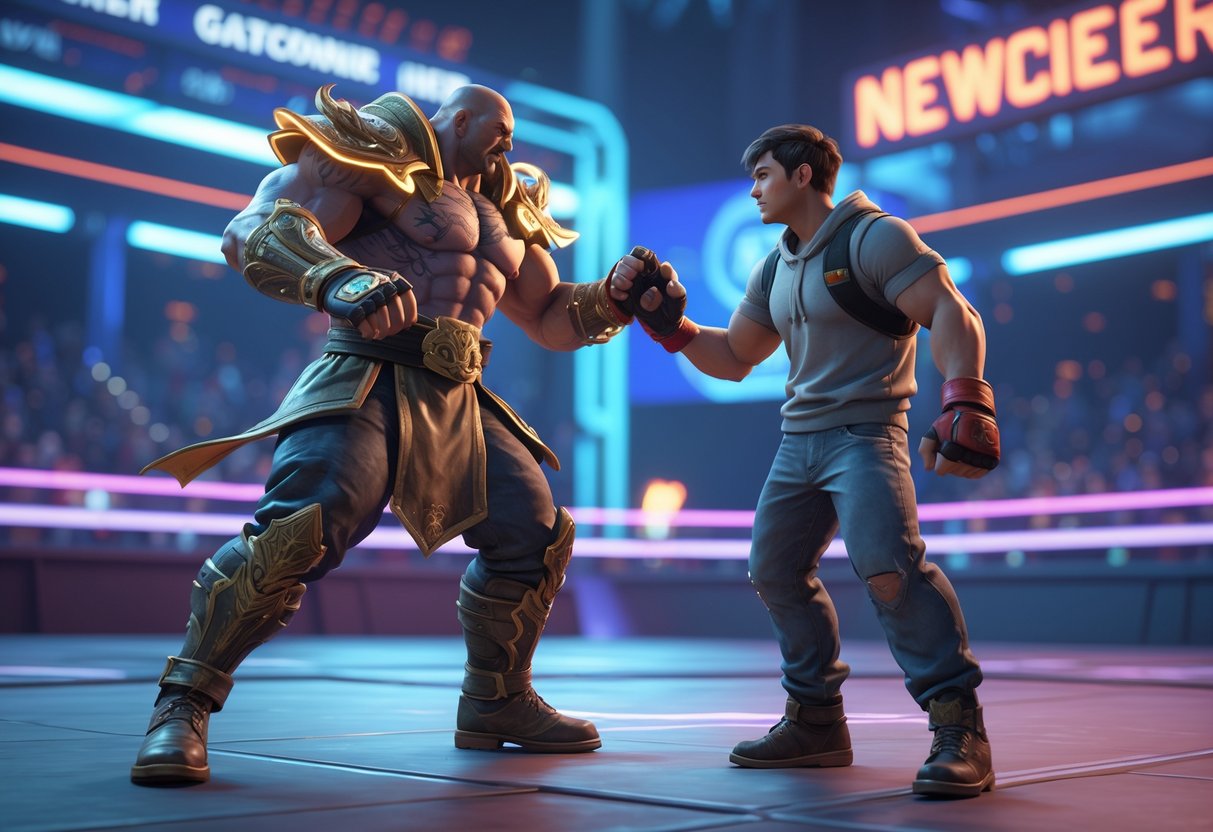
New players run into some real barriers in fighting game communities. The difference between helpful guidance and harmful exclusion? It gets messy sometimes. Spotting these challenges helps everyone build better spaces.
Barriers for Beginners
Complex execution trips up most newcomers. Lots of fighting games demand precise timing and finger dexterity that honestly takes months to get down.
Watching advanced players pull off wild combos while you’re struggling with basics? That gap feels massive.
The community sometimes brushes off execution struggles. You’ll hear “just practise more” or “fundamentals are what matter,” but that doesn’t really address how rough dropped combos can feel.
Unspoken rules in the community also trip up beginners. Local scenes might have their own etiquette for things like arcade stick sharing or how matches rotate, and nobody really spells it out.
Online forums can be brutal. New players asking simple questions often get sarcasm or a snarky “read the wiki first.”
Money issues pile on, too:
- Good arcade sticks cost £150-300
- You might need to buy multiple games
- Tournament fees and travel add up
- Training mode DLC and character passes aren’t free
A lot of beginners don’t realize they can just use a standard controller. That misunderstanding scares off people who might’ve tried fighting games.
Guidance Versus Exclusion
Positive mentorship totally changes things for new players. When experienced folks give clear, specific advice, beginners improve so much faster.
The best mentors keep it simple. Maybe they’ll say, “Just work on your anti-air timing this week,” instead of dumping a laundry list of problems on you.
Beginner brackets at local tournaments give new players a safe place to compete. They don’t have to face pros right away, so it’s less intimidating.
Harmful gatekeeping pops up when people question a newcomer’s commitment. Stuff like “real fighting game players do X” just sets up fake hierarchies.
Some folks use technical jargon to flex instead of teach. They’ll toss around frame data in a way that just confuses beginners.
The sweet spot is honest talk about time investment. We can admit fighting games take effort, but we don’t have to scare people off.
The best communities balance high standards with a welcoming vibe. They cheer on improvement, not just raw skill, and never forget that everyone started at the bottom.
Quick tip: Try to find local groups that openly welcome beginners—lots of them run new-player nights.
Toxicity and Negative Behaviours in the FGC
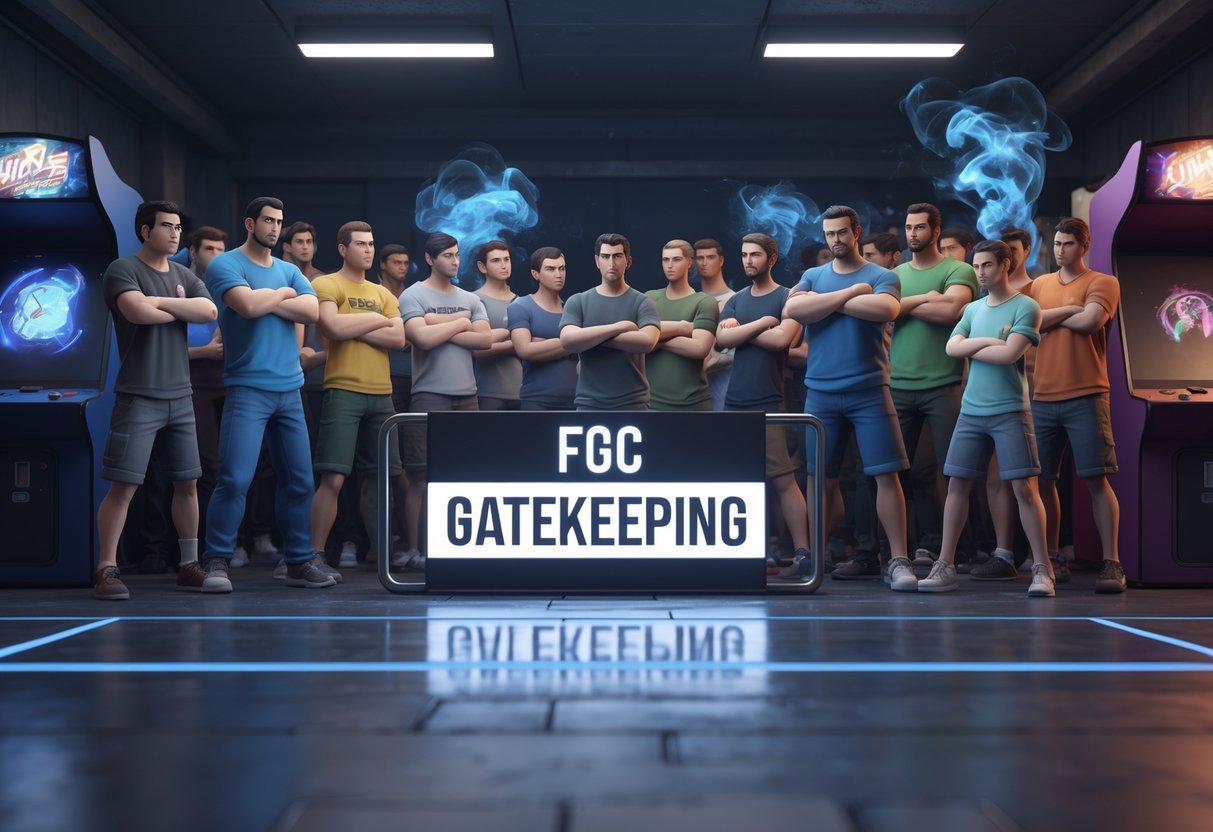
The fighting game community definitely struggles with exclusion and some nasty attitudes, especially online. These problems show up as aggressive language and gatekeeping that pushes away players at every level.
Language and Attitudes
Online fighting game spaces, yeah, they can get pretty toxic. Discord servers and social media often end up full of harassment aimed at new players.
Heads up: Lots of newcomers say they feel unwelcome after running into aggressive behavior in public chats and forums.
It’s usually not the pros causing trouble. More often, intermediate players—like those Diamond-ranked folks in Street Fighter V—send hostile messages to beginners. They also go after content creators who try to help out new players.
Some people use “knowledge gatekeeping” just to show off. They’ll quiz newcomers on obscure mechanics or even spread false info just to trip them up.
You’ll see these toxic behaviours:
- Mocking beginner combos and strategies
- Calling certain games “not real fighting games”
- Sending nasty DMs after matches
- Spreading misinformation on purpose
Anonymity online makes things worse. People act out when they know there won’t be any real consequences.
Impact on Participation
Toxic behavior drives people away from the fighting game community. Tons of newcomers quit within just a few months after bad experiences.
Local offline scenes usually feel a lot friendlier. Most players say they have positive experiences at in-person tournaments and meetups. Being face-to-face just discourages the worst stuff.
Quick win: Start with local offline events if you want to avoid most of the toxicity.
Still, online negativity does a lot of damage. New players often quit before they discover how supportive offline scenes can be. That means communities struggle to grow past their core members.
Underrepresented groups have it even tougher. Women and younger players get harassed more often, which really hurts diversity and growth.
Here’s the real impact:
- 40-60% of newcomers quit within three months
- Online harassment hits diverse players the hardest
- Local scenes lose out on fresh faces
- Tournament attendance drops because of a bad reputation
Cultural Differences in Gatekeeping
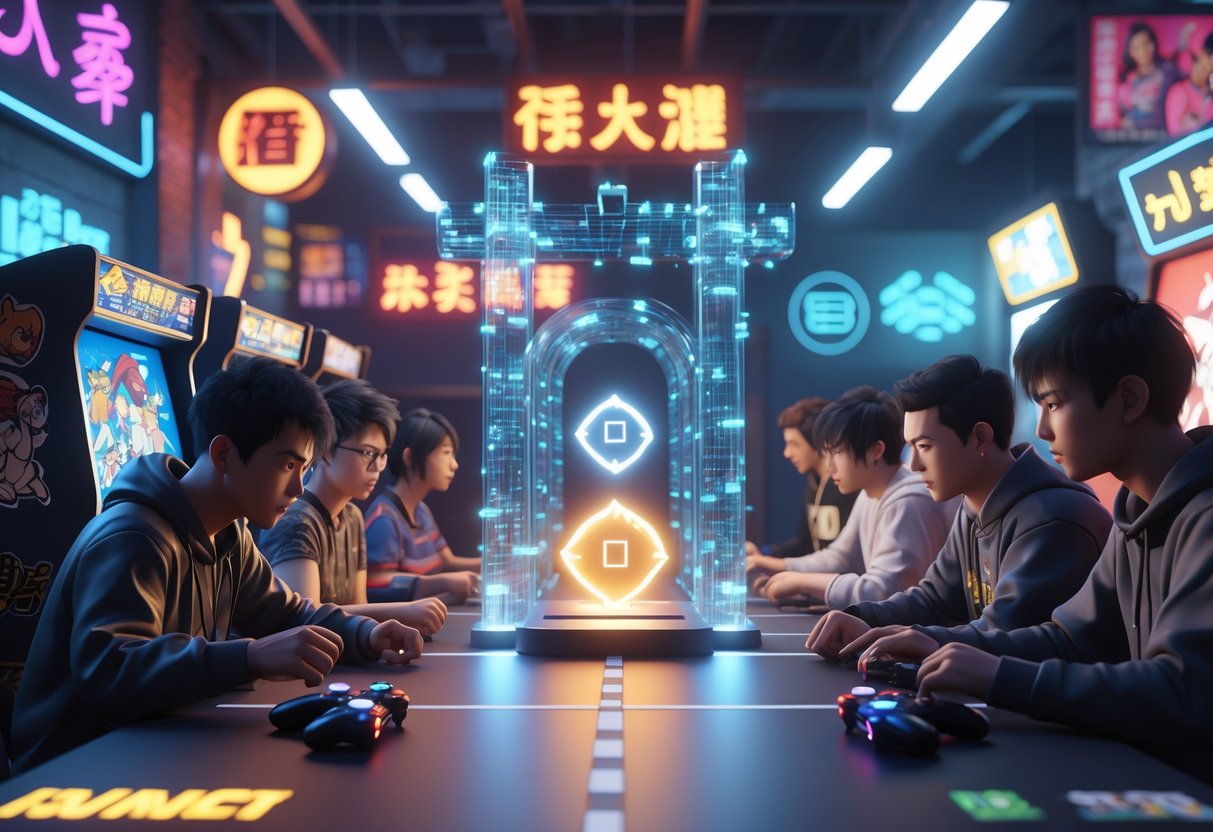
Different regions shape fighting game communities in their own ways. These cultural quirks really change how gatekeeping looks, both online and in person.
Regional Community Norms
Japan’s Fighting Game Scene Japanese arcades usually build a respectful learning vibe. Players quietly line up behind the machines and watch matches.
That setup makes mentorship happen naturally. Experienced players often help newcomers with basic mechanics, sometimes without even being asked.
Western Tournament Culture
Europe and America put more focus on tournament results than casual play. You’ll see newcomers get challenged about whether they’ve “earned” their spot.
Players often question if someone belongs in local tournaments. That just makes it harder for new folks to break in compared to Japanese arcades.
Online Regional Differences
- Asia-Pacific: All about technical execution and long practice sessions
- Europe: Focus on tournament results and competitive track records
- North America: Somewhere between casual acceptance and hardcore elitism
Perceptions of Skill and Respect
Execution vs Strategy Different regions care about different things. Asian communities usually prize frame-perfect combos and technical consistency.
Western scenes care more about adaptability and mind games. That can create friction when people from different backgrounds meet online.
How Beginners Get Treated Some groups see struggling newcomers as a test of dedication. Others treat them as future community members who deserve support.
Age and Experience Older players sometimes gatekeep by saying you have to “pay your dues” through years of losses. Younger scenes usually welcome people who improve quickly with modern training tools.
Communities with active local scenes usually have less gatekeeping than groups that are only online.
The Role of Technology and Online Play
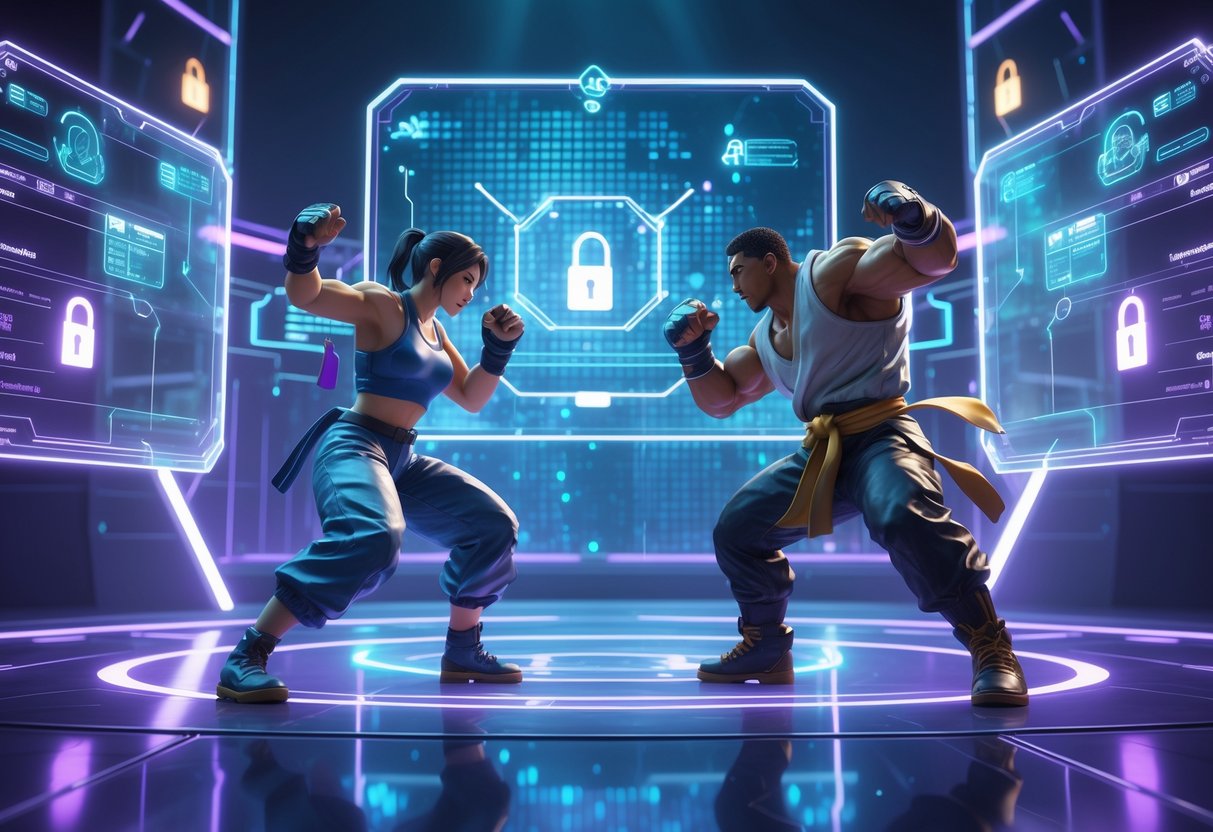
Technology has completely changed gatekeeping in fighting games. Online platforms make it easier than ever to jump in, but tech hurdles still keep some people out.
Online Platforms and Accessibility
Modern online systems have broken down a lot of old barriers. Steam, PlayStation Network, and Xbox Live let you find matches with anyone, anywhere, at any skill level. You don’t need a local arcade anymore.
Rollback netcode made a huge difference. It makes online matches feel nearly as good as offline. Games with smooth netcode attract more players—nobody wants lag.
But tech requirements still shut some people out. Not everyone has:
- Fast, stable internet
- Up-to-date gaming hardware
- Money for online subscriptions
Players in rural areas often deal with bad internet speeds. That’s a big problem in games where every single frame counts.
Tech as a Barrier or Equaliser
Technology can block people out or bring them in. High-end setups cost a lot, so newcomers might feel left behind.
Top players often use:
- Gaming monitors with 1ms response times (£200-500)
- Premium arcade sticks (£150-300)
- Wired internet for stability
On the flip side, tech can level things out. Modern training modes break down combos step-by-step. Online tutorials and frame data tools help new players get up to speed way faster.
Discord servers and streaming platforms create spaces where pros share their knowledge. Lots of top players stream practice, so everyone can watch and learn.
It really comes down to how the community uses these tools. Welcoming groups share tech and help each other. Gatekeeping groups hoard info or mock people for using basic setups.
Gatekeeping in Competitive and Casual Spaces
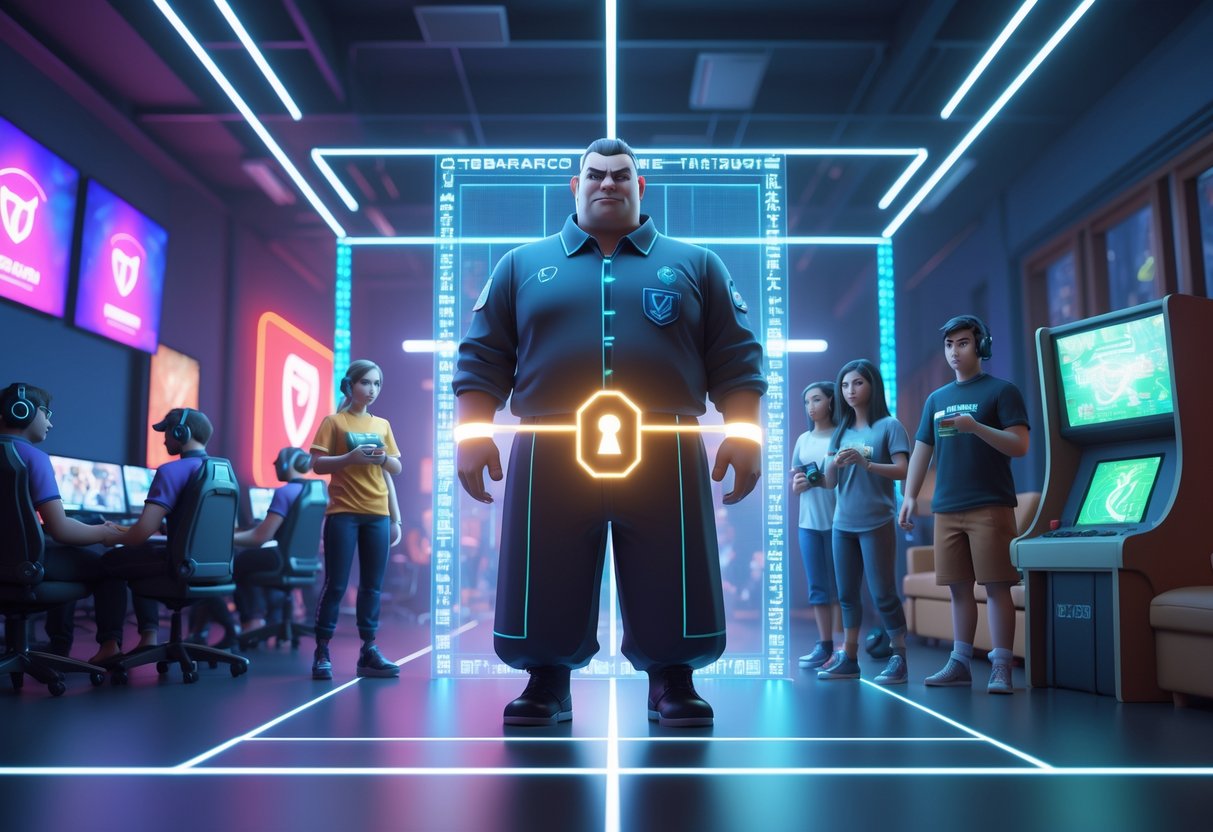
Gatekeeping looks different in tournaments compared to casual groups. Skill gaps and community barriers show up in both, but the way people share knowledge (or don’t) really depends on the setting.
Tournaments and Ranking Systems
Tournaments can feel really tough for new players. Lots of events don’t have beginner brackets or mentors to help out.
Skill-based exclusion happens when experienced players ignore or dismiss newcomers who haven’t “earned it” yet. It shows up in a bunch of ways:
- Refusing to share basic matchup info
- Using complicated terms with no explanation
- Dismissing mobile or simplified fighting games
- Setting up unofficial “minimum skill” rules
Common tournament barriers:
| Barrier Type | Example | Impact |
|---|---|---|
| Entry requirements | “No scrubs allowed” | Excludes beginners |
| Format complexity | Swiss brackets, no explanation | Confuses newcomers |
| Equipment gatekeeping | Arcade stick only | Adds financial pressure |
Online ranking can make things worse. Players sometimes refuse to help others climb, thinking it protects their own rank instead of growing the scene.
The “lab monster” mindset shows up here—players who keep advanced tech to themselves instead of teaching basics everyone needs.
Casual Play and Social Groups
Local groups have their own gatekeeping issues, mostly around social stuff.
Social gatekeeping decides who “belongs” in casual spaces. People get judged for:
- Liking mainstream or niche games
- How many hours they’ve played
- Knowing community history or inside jokes
Character and playstyle shaming is another problem. Some groups mock players who pick “easy” characters or use simple tactics, even though those are totally valid.
Friend group dynamics can leave outsiders out by:
- Using inside jokes newcomers don’t get
- Keeping player hierarchies locked in
- Having unspoken rules about who uses the best setups
Gaming journalist Aaron Connolly put it well: “Casual spaces should be safe for learning, but gatekeeping often makes them scarier than tournaments.”
The “git gud” attitude pops up a lot, too. Instead of giving helpful advice, some players just brush off newcomers with nothing but “get better.”
Quick tip: Seek out local groups that rotate teaching roles and actually want beginners to stick around.
Breaking Down the Barriers
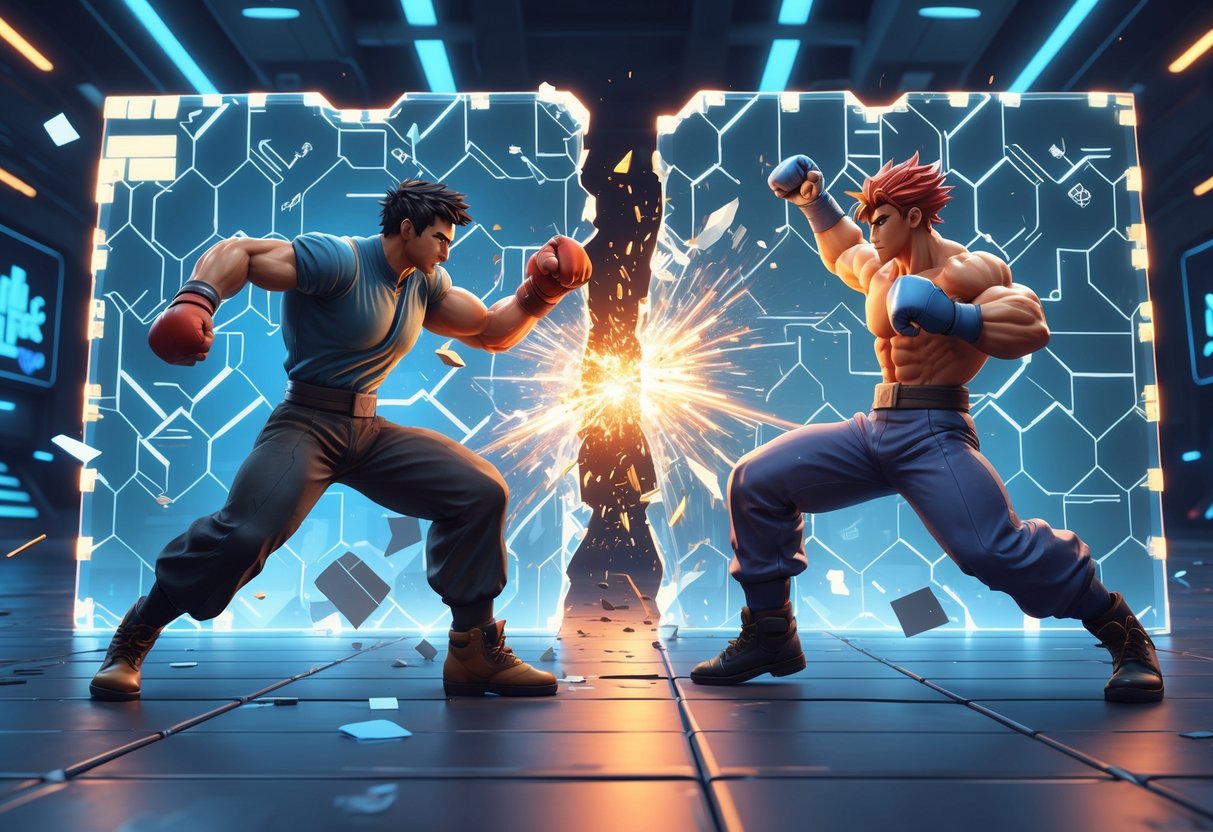
Solving gatekeeping means more than just calling it out. We need to build systems that make fighting game communities welcoming from day one. Newcomers should get a shot to learn without judgment, and competition should be about getting better—not proving who deserves to be there.
Strategies for Inclusive Communities
If we’re serious about building an inclusive fighting game community, we need to rethink how we shape learning opportunities. Beginner-only tournaments give new players a real shot at competing, without tossing them straight into the deep end against veterans.
Weekly training sessions really shine when experienced players pair up with newcomers. The mentor system helps knowledge flow naturally and chips away at that old “us vs them” divide.
Discord servers and local groups thrive when they use clear community guidelines that call out gatekeeping. Stuff like “no skill-shaming” or “explain techniques instead of dismissing questions” sends a clear message.
Tournament organisers can set up skill divisions—kind of like chess ratings. Players get to compete at their own level, but still feel part of the bigger event.
Here’s a quick win: kick off a monthly “fundamentals night.” Let advanced players teach the basics. That way, experienced folks become mentors, not gatekeepers.
Local gaming cafés often turn into natural hangouts when they set aside time for different skill levels. Newcomers get a chill spot to practise, and veterans still have their own competitive sessions.
Encouraging Healthy Competition
Healthy competition should focus on personal growth, not shutting others out. A constructive feedback culture can turn gatekeeping moments into real learning chances.
Instead of saying “that combo is rubbish,” we can try “adjust your timing” or “here’s why that setup didn’t work.” This moves the conversation from judging to actually helping.
Training mode partnerships are fantastic for building community. Players swap turns practising and offer each other tips on execution or strategy.
Local tournaments can hand out improvement-focused prizes alongside trophies for winners. Awards like “most improved player” or “best sportsmanship” highlight growth, not just raw skill.
Warning: Don’t create “scrub” categories or use language that implies some players aren’t worthy of competing.
Regular community challenges keep things interesting for every skill level. Weekly combo trials or character-specific tournaments give everyone a chance to shine, without impossible matchups.
After matches, people should talk about what both players learned. That way, losing feels like part of the process, not a reason to feel left out.
Looking Forward: The Future of Gatekeeping in Fighting Games
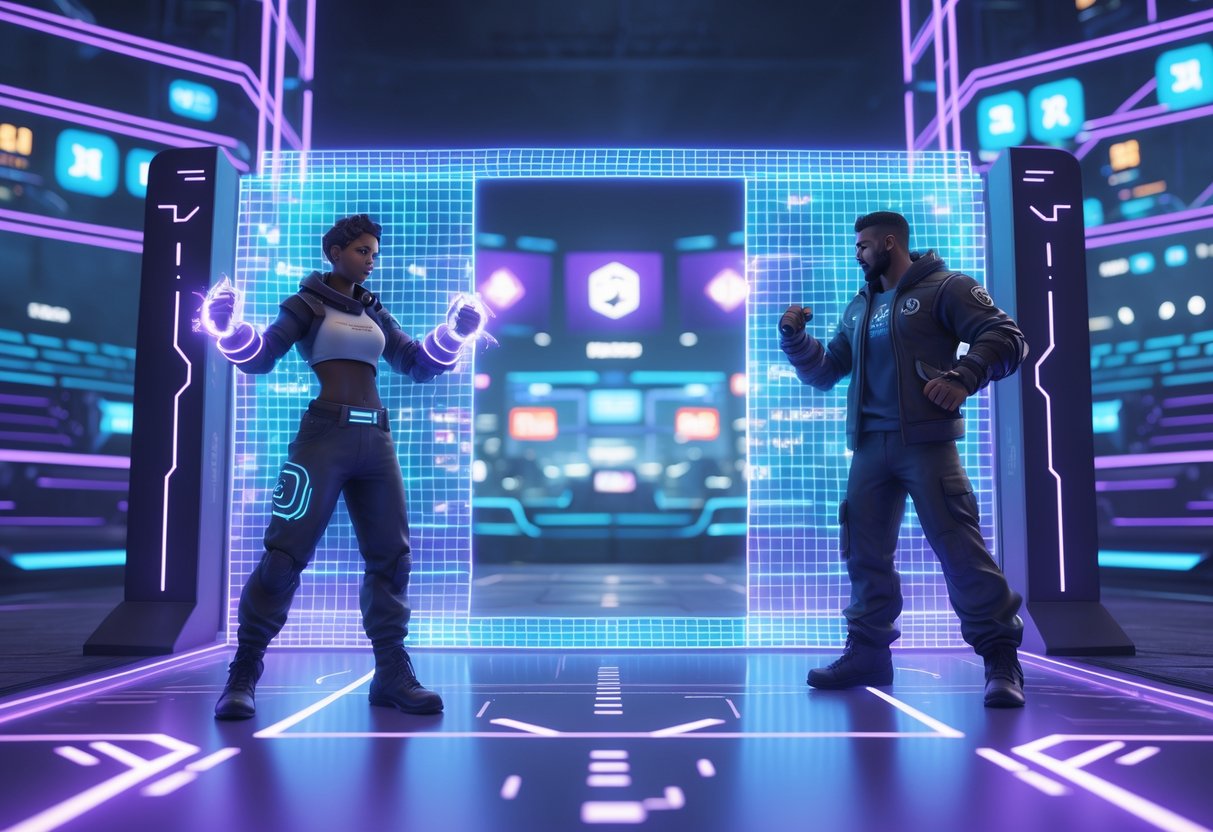
The future of fighting games really depends on how well developers and communities balance accessibility with depth. We’re already seeing some good shifts—better tutorials, smarter training modes, and online matchmaking that actually works.
Modern solutions keep popping up that tackle gatekeeping without watering games down. Street Fighter 6’s modern controls let newcomers jump in, but veterans still get their classic inputs. Tekken 8’s ghost battles? Those help folks practise against real player data.
Here are the main spots where change is happening:
• Training tools – AI coaches, frame data displays
• Matchmaking – Smarter skill-based pairing
• Content creation – More beginner-friendly guides from pros
• Community moderation – Tougher rules against toxic behaviour
Developers are shifting their priorities towards inclusion. Companies now care about player retention, not just tournament numbers. That means making games that welcome newcomers, while still giving veterans what they want.
| Traditional Approach | Future Direction |
|---|---|
| Sink or swim mentality | Guided progression paths |
| Frame data memorisation | Visual indicators |
| Toxic online culture | Positive reinforcement systems |
| Elitist communities | Welcoming spaces |
Warning: Some hardcore fans push back, claiming these changes “casualise” fighting games.
The next wave of fighting games will probably feature adaptive difficulty, better social tools, and clearer feedback. I think we’ll see more crossover appeal, but without losing that competitive edge.
Communities that open their doors to newcomers, but still keep the competitive spark, will thrive. Others might just fade away as gaming keeps changing.
Frequently Asked Questions
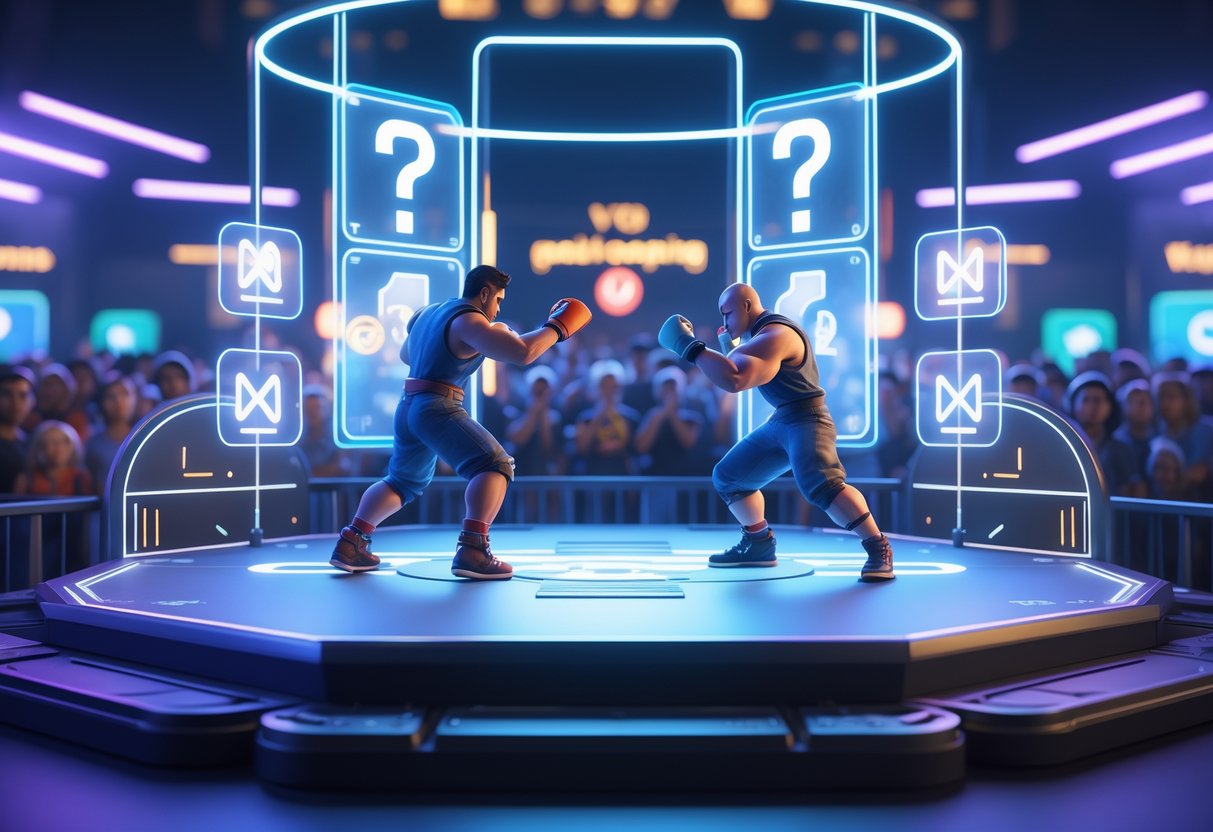
New players deal with real challenges when they join fighting game communities. Technical barriers and social pressures can make things tough. If we get these hurdles and how to fix them, everyone has a better shot at enjoying the scene.
What are some common barriers new players face in competitive fighting communities?
The biggest hurdle is the steep learning curve. Fighting games throw complex inputs, frame data, and character matchups at you all at once.
A lot of newcomers feel lost in the technical jargon. Words like “neutral game,” “okizeme,” and “tick throws” might as well be another language.
Online ranked systems can feel brutal. New players often get steamrolled by veterans, which kills the motivation to keep going.
Local tournaments sometimes feel cold. Some competitors won’t share basic knowledge or explain why certain strategies work, and that just pushes newcomers away.
The cost barrier is real, too. Good arcade sticks and controllers can cost £100-300, which is a lot to spend before you even know if you’ll stick with the game.
How can experienced players create a more welcoming environment for newcomers?
Share the basics openly—don’t keep them secret. One fighting game expert put it well: basic matchup info should never be “secret tech.”
Take time to explain why something works, not just “that’s not real.” New players pick things up faster when they know the reasoning behind defensive options.
Offer casual matches at tournaments, not just serious sets. Beginners get to learn without the stress of high-stakes play.
Set up beginner-friendly events in your local scene. Weekly newcomer tournaments with simple rules help people build confidence.
Be patient when you hear the same questions again and again. Every expert started out asking those, right?
What’s the best way for beginners to overcome intimidation when starting out in fighting games?
Start in training mode before diving into matches. Spend some time learning your character’s moves and combos without any pressure.
Watch high-level gameplay to get a feel for what good play looks like. YouTube tutorials and tournament videos are great for this.
Accept that losing is just part of the journey. Every loss teaches you something new or shows you where to improve.
Focus on small wins. Landing a combo you’ve practised feels awesome, even if you lose the match.
Find a training partner who’s at your level. Learning together makes the whole process less intimidating.
Could you suggest ways to find inclusive and supportive fighting game communities?
Look for Discord servers made for beginners or for specific characters. Many run mentorship programs that pair you with experienced players.
If you’re a student, check out university gaming societies. These groups usually welcome all skill levels and focus more on fun.
Search for “newbie nights” at local gaming venues. Lots of arcades and gaming centres run weekly events just for beginners.
Join online spaces like Reddit’s fighting game subreddits. The r/StreetFighter community and others have special threads for newcomers.
Ask questions in Twitch chats during tournaments. Tons of viewers like helping new fans figure out what’s happening.
In what ways can the design of fighting games discourage gatekeeping behaviours?
Better tutorial systems help new players learn on their own. Games like Guilty Gear Strive offer step-by-step mission modes that teach even advanced stuff.
Improved matchmaking keeps new players from running into experts right away. Ranking systems that actually measure skill create fairer matches.
In-game frame data displays take the mystery out of character moves. When you can see the numbers, you don’t have to depend on others for the basics.
Replay systems let beginners review their losses. Watching matches again helps you spot mistakes without needing an expert to tell you.
Accessible control schemes lower the execution barrier. Modern controls in Street Fighter 6 let new players focus on strategy, not just inputs.
How does the attitude of the community impact the learning experience of new players?
A positive community really speeds up learning because people actively share tips and strategies. When experienced players jump in to help, everyone seems to get better a lot faster.
If the community feels welcoming, new players usually stick around. Most folks want to keep playing when they feel supported instead of judged.
On the other hand, toxic behavior just drives people away. Gatekeeping shrinks the player base and, honestly, it stunts the whole scene’s growth.
Supportive groups make for better practice partners too. Players pick up skills faster when their opponents want to help them learn, not just win every match.
The reputation of a community can totally sway who tries the game. Games with friendly, helpful folks draw in more newcomers than those with a reputation for being elitist.

